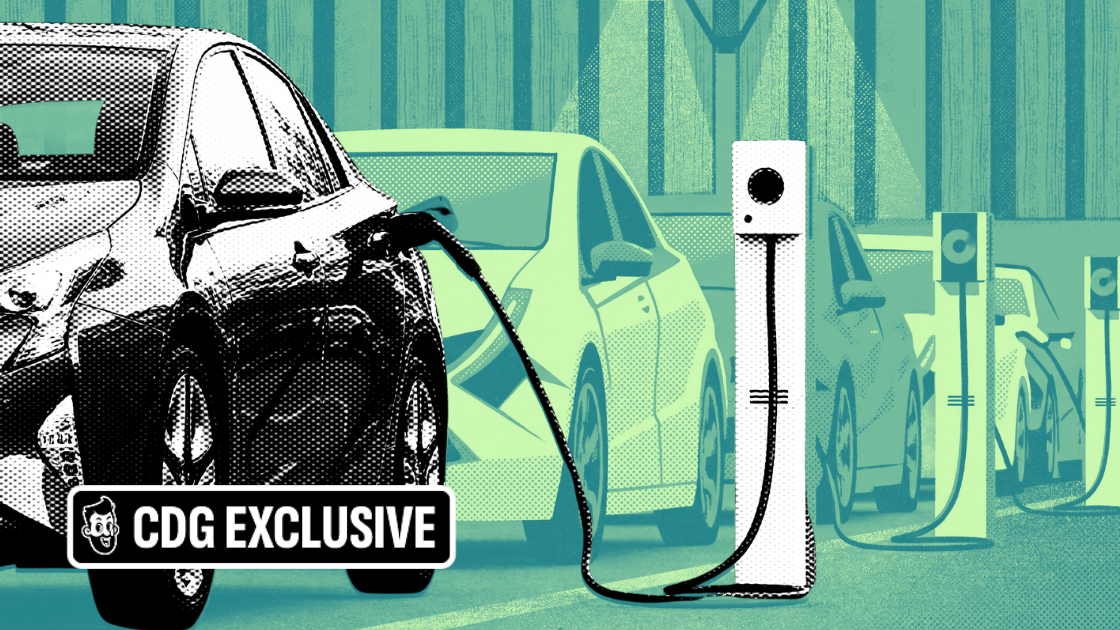
Mazda is making massive changes in its electrification strategy, announcing that it will slash $3.3 billion from its EV plans.
The details: News of the shift is part of the Japanese automaker’s new “Lean Asset Strategy” and includes a “Multi-Solution” plan anchored in a more flexible production approach to manufacturing a diverse mix of powertrain offerings, including Battery Electric Vehicle (BEV), Hybrid, and Internal Combustion Engine (ICE) vehicles.
The plan includes Mazda cutting its investment in electrification from $13.3 billion to $10 billion, by leveraging existing partnerships with companies like China’s Changan, Toyota, Denso, and BluE Nexus.
Mazda expects the more flexible production strategy to reduce its investment by about 85% and cut the production lead time by around 80% for a hybrid version of its next-generation CX-5.
Why it matters: Mazda joins a growing list of mass-market car companies modifying their EV strategies to better align with consumer demand. In 2024, the Japanese automaker posted record sales, with over 420,000 vehicles delivered (a 16% increase compared to 2023), without a single EV in its lineup.
Zeroing in: The company’s new plan that calls for changing its approach to EV production will play out several ways regarding future powertrain and products across the Mazda line-up.
Mazda’s SkyActiv-Z platform is a core component of the company’s new strategy, with the next-gen CX-5 slated to debut later this year being the first vehicle to feature the new engine.
The hybrid version of the next-gen CX-5, which will be equipped with the SkyActiv-Z, is expected to arrive by the end of 2027.
Mazda aims to expand its use of the SkyActiv-Z technology beyond the four-cylinder variant, with plans to adopt the platform for inline-six engines for larger models.
What they’re saying: “As the automotive industry is going through a once-in-a-century seismic shift, Mazda keeps evolving by updating our ‘joy of driving’ for the next generation of vehicles. All of us at Mazda are committed to striking the right balance of efficient business management and development of sustainable technology to deliver unique value regardless of business scale,” stated Masahiro Moro, CEO, Mazda (via Carscoops).
Bottom line: Instead of going all-in on electrification, Mazda is betting on a flexible strategy that balances hybrids, ICE, and BEVs—mirroring what’s worked for Toyota. Given its record sales without a single EV, Mazda’s cautious pivot could pay off in a market that’s still figuring out its EV appetite.
Become an automotive insider in just 5 minutes.
Get the weekly email that delivers transparent insights into the car market.
Join 90,000+ others now, it's free:
Courtesy transportation is no longer a nice-to-have.
It’s a need-to-have.
That’s why 80% of dealership respondents agree that providing courtesy rides with Uber has helped retain customers, based on Uber’s survey of 79 organizations in 2023.
With Central, you can request an Uber ride on behalf of your customers, even if they don’t have the Uber app. Car dealerships love using Uber because it’s a simple way to offer white-glove customer service, supplement loaner cars or shuttles, and manage parts pickup and delivery.
Dealers can request one-way or round-trip rides, add multiple riders and locations, set spend caps, and even monitor trips in real time.
Plus, you'll get monthly reports to keep track of everything.
If you’re ready to reduce the costs associated with maintaining shuttles and limit the liability of loaner vehicles, it's time to partner with Uber for Business.











